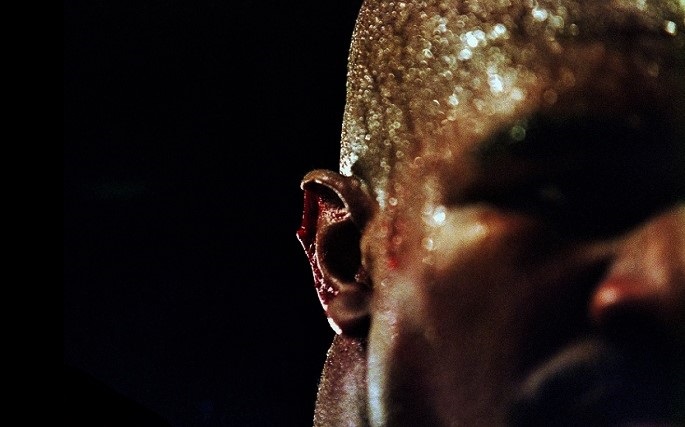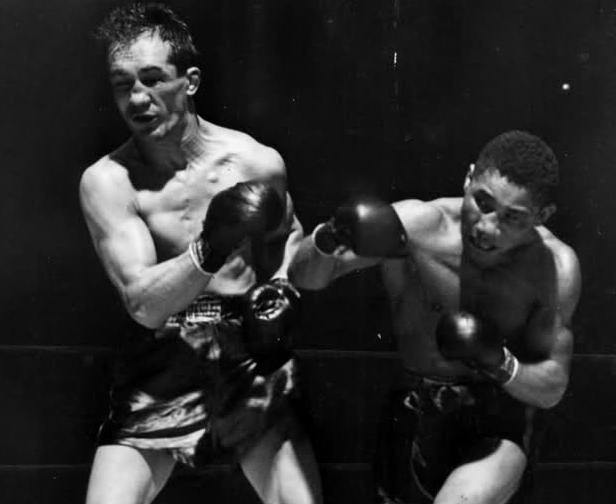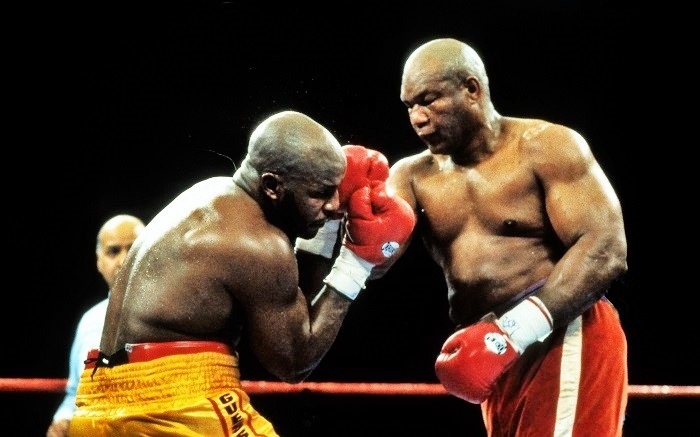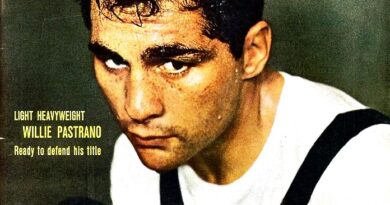June 28, 1997: Holyfield vs Tyson II
Twenty three years ago today, one of the most savage moments in boxing history took place at the MGM Grand in Las Vegas. In perhaps the biggest sporting event of the 1990’s, Evander Holyfield and Mike Tyson met a second time to settle the score after “The Real Deal” had pulled off the unthinkable the previous year, stopping “Iron Mike” in an all-time great upset. Like their first encounter, the rematch surpassed all expectations, albeit in a markedly different manner. The Holyfield vs Tyson sequel treated nearly two million pay-per-view buyers to only three rounds of action, but also one of the most bizarre and unforgettable endings of all-time.
The fight picked up where its predecessor left off, with Holyfield bullying the bully, thwarting Tyson’s aggression, controlling the action on the inside, and even hurting “Iron Mike” before the end of round one. While Evander Holyfield was again showcasing his technical superiority, “The Real Deal’s” physicality was also frustrating Tyson, as the champion used his head, shoulders, and forearms to neutralize Mike at close quarters.
Not long into round two, a cut opened above Tyson’s right eye, marking the second time in two fights that an “accidental headbutt” would inflict a handicap on the former champion. And this time, one could see the visible frustration in Tyson’s eyes as he frequently looked over at referee Mills Lane, hoping he might take the kind of action Mitch Halpern had failed to take against Evander in the first fight. But Mills imposed no sanctions on the defending champion, ruling the headbutt accidental and allowing Holyfield to continue with his rough-house tactics on the inside.
Late in the round, with Holyfield pushing Tyson backwards in a clinch, Mike twisted his opponent’s arm in what appeared to be an attempt to disable the champion. But Tyson didn’t get the reaction he was looking for as Evander man-handled Mike in return, shoving him off and showing little regard for the challenger’s flagrant foul. When the bell rang to end the round, Tyson’s body language suggested capitulation as he looked to touch gloves. Then, as Holyfield made his way back to his corner, “Iron Mike” stood there with a blank expression of stunned disbelief, as if it were dawning on him that the mettle required to stave off the “Real Deal” was no longer in him.
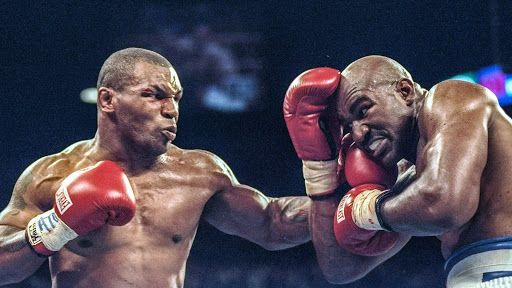
But instead of capitulation and resignation, it was rage that came to the fore at the start of round three, Tyson’s demons manifesting themselves in a brief vision of vintage “Iron Mike,” the challenger charging out ferociously and firing explosive left hooks and right hands. But after two minutes, Holyfield was still on his feet, still in charge, and unfazed by Tyson’s short-term resurgence. And it was in this moment that Tyson found himself alone, powerless and facing a second humiliating defeat.
While all could see the visible anger and frustration in Tyson’s eyes, no one could have ever predicted what happened next. The two warriors came together in a clinch and then suddenly Holyfield was jumping up and down in shock and agony, a reaction, all would soon realize, to a bite which had torn off a piece of Evander’s right ear. It was the bite felt around the world, a desperate act from a man who had lost complete control of his mind, his emotions, and his actions. Mills Lane, a normally decisive referee, had to consult with the ringside doctor and the state athletic commissioner before deciding his next move. After much deliberation, he allowed the fight to continue with a two point deduction from Tyson, but it wasn’t long before Mike was at it again, this time turning his teeth to Holyfield’s left ear in another inexplicable act of rage.
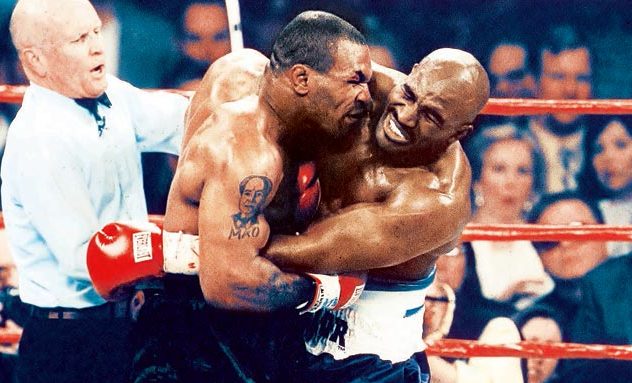
The round ended and Lane, having determined that a second bite did in fact happen, finally disqualified Tyson, which only fanned the flames of the rage of “Iron Mike.” Tyson began attacking everyone in his way in a bizarre attempt to get at Holyfield, inciting an unprecedented scene of bedlam as countless security guards worked to restrain Tyson, some of them taking heavy leather for their efforts. With the fight long past its conclusion, fans were nevertheless still on the edge of their seats, taking in the bizarre spectacle and waiting to see what a clearly unhinged Mike Tyson might do next.
The defeat brought to an end the post-prison phase of Tyson’s career, when he had recaptured his image as “The Baddest Man On The Planet” and appeared to once again be, arguably, the best heavyweight in the world. But it also marked a new beginning. After Tyson served a one year suspension, he returned to the ring in 1999 a bigger attraction then ever, the “Bite Fight” only bolstering his image as a must-see mainstream attraction. And make no mistake, Tyson’s undeniable appeal now had little to do with his past ring brilliance, with his once being the knockout machine that electrified venues in the late eighties. Rather, fans simply couldn’t stop watching the train wreck that was Mike Tyson, eagerly anticipating whatever unprecedented lows his rage might bring next.
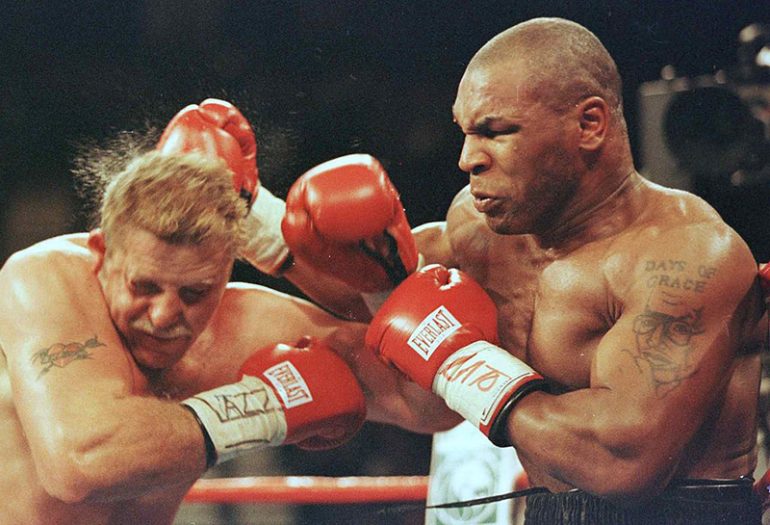
A caricature of himself, “Iron Mike” became a boxing purist’s worst nightmare, a cash cow standing for everything that detractors of the fight game love to criticize, an ironic turn for a man tutored by Cus D’Amato to be a boxing purist himself. But Tyson’s regression from being the best heavyweight in the world to the unabashed embodiment of boxing’s dark and seedy side, forced us to put the sport’s barbaric history in perspective.
Was Tyson’s bite attack on Evander Holyfield really more “primitive” or “depraved” than say Duk-Koo Kim being taken from the ring on a stretcher on live television only to die in hospital a few days later? Was it more savage, more repulsive, than Nigel Benn inflicting permanent brain damage on Gerald McClellan, or Ray Mercer landing flush power shots on an unconscious Tommy Morrison? Simply put, it was always easier to condemn Tyson, or dismiss him as a raging lunatic, than to confront the truth that his violent antics against Holyfield, or Lou Savarese, or Orlin Norris, reflected, to some degree at least, the underlying brutality of the sport.
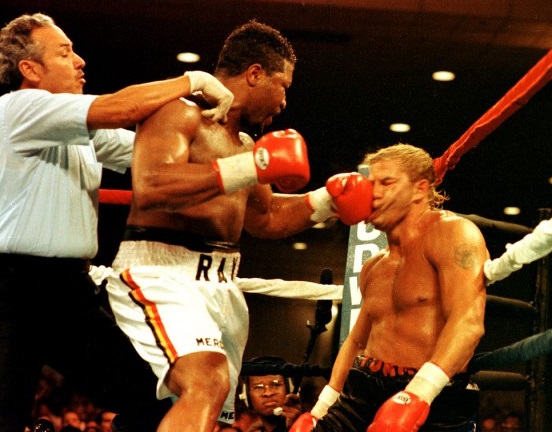
More than two decades later, the “Bite Fight” is still more conversation-worthy with the guy on the next bar stool than some of boxing’s prouder moments of the last twenty years such as Corrales vs Castillo I, or the Barrera vs Morales and Gatti vs Ward trilogies. But apart from its tabloid appeal, the significance of Holyfield vs Tyson II should not be overlooked; it was certainly more than just “The Bite Fight.” It was a call for some serious reflection on the spectacle of boxing, on Mike Tyson, and on the toll this sport takes on human lives. And above all, it’s a reminder that boxing exists in a moral grey zone. Whether it’s “The Sweet Science” to you, or something closer to barbarism, the fight game is not going anywhere. Its innate brutality is what draws us, despite how much we try to convince ourselves otherwise.
As Kris Kristofferson might put it, boxing is “partly truth, partly fiction, a walking contradiction.” But make no mistake, Holyfield vs Tyson II, “The Bite Fight,” was no contradiction. It just hit closer to home. — Alden Chodash

